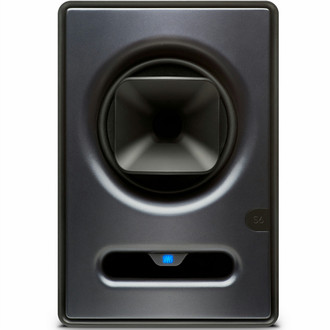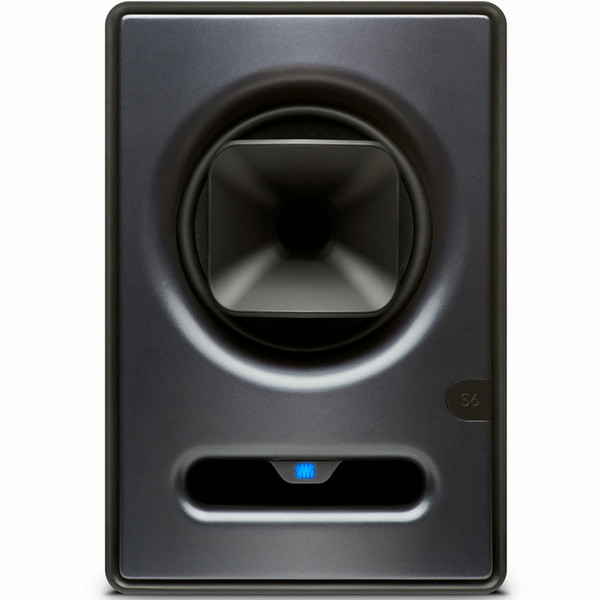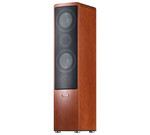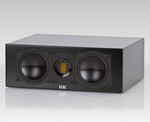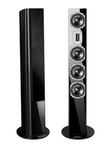目錄的
-
目錄的
- Antiquitäten & Kunst
- Auto & Motorrad: Fahrzeuge
- Baby
- Bücher
- Camping & Outdoor
- Feinschmecker
- Garten & Terrasse
- Haushalt & Wohnen
- Haustierbedarf
- Heimwerken & Garten
- IT和电子
- Kleidung & Accessoires
- Modellbau
- Musik
- PC- & Videospiele
- Sammeln & Seltenes
- Spielzeug
- TV, Video, DVD
- Telekommunikation
- Uhren & Schmuck
- Wellness & Beauty
- fashion & lifestyle
- institutional food services equipment
- medical equipment, accessories & supplies
- 个人护理
- 休闲爱好
- 办公设备,用品和配件
- 商业与工业
- 家居,建筑,装修
- 家用电器
- 摩托车及配件
- 武器和弹药
- 照相机
- 花园和庭院
- 运动,娱乐及休闲
- 食物
- 高保真音響
Filters
Search
PreSonus Sceptre S6
凡购买和价格 (Advertising *)
顶部
技术特点
顶部
扬声器
| 低音炮 | Y |
|---|---|
| 低音炮 寸法 | 6.25 " |
| 高频扬声器直径 | 1 " |
| 高音喇叭驱动器数量 | 1 |
| 扬声器数量 | 1 |
| 放大器 | Built-in |
| 高频扬声器 | Y |
| 低音单元驱动器数量 | 1 |
| 推荐使用 | Studio |
音频
| 交叉频率 | 2200 Hz |
|---|---|
| 灵敏度 | 109 dB |
| 频率范围 | 52 - 20000 Hz |
| 阻抗 | 10000 Ω |
能量控制
| 电源类型 | AC |
|---|
另外
| 连接方式 | Wired |
|---|
XLR, 0.635 cm (0.25 ") TRS, 52 Hz - 20 kHz, 109 dB, 10 kΩ, 8.53 kg
Hear the difference.
The first time you hear Sceptre-series CoActual™ 2-way studio monitors, you’ll discover fine nuances of your music that can’t be reproduced by conventional designs. The Sceptre’s panoramic soundstage, fine detail, and stunning dynamics will astonish you.
The coaxial conundrum.
Coaxial designs offer the advantages of a single point source for a consistent acoustic center and a symmetrical dispersion pattern. But designing coaxial systems without acoustic anomalies has been extremely expensive—until now.
The magic of TQ.
Each Sceptre monitor contains a DSP chip that enables the use of Fulcrum Acoustic’s TQ algorithms. The result is speakers that deliver the full benefits of coaxial design.
No driver is perfect, nor can a driver be made perfect with hardware alone; there are always compromises in physical systems. To overcome these driver compromises, many speaker manufacturers apply DSP in the form of a combination of multiband EQs but the processing is more or less an afterthought—it’s not accounted for in the design of the transducer. This sorta works—more or less.
A few high-end loudspeaker companies have developed sophisticated solutions with active DSP that is co-designed with the speaker, but these are expensive solutions. And only one company has done it with coaxial designs: Fulcrum Acoustic.
So instead of taking the crude, old-skool approach, we partnered with Fulcrum Acoustic and licensed its high-end TQ™ Temporal Equalization, which, up until now, could only be found in very high-end speaker systems.
With TQ, the basic speaker and enclosure designs meet the fundamental physical requirements for accurate, clear sound—characteristics that cannot be obtained with DSP. The TQ algorithms deal with the remaining issues using multiple fully addressable, fairly large Finite Impulse Response (FIR) filters to eliminate horn reflections and to correct linear time and amplitude anomalies. The hardware and TQ settings are designed to work together from the outset, rather than taking an existing speaker system and trying to correct it with DSP.
Sceptre starts out with a transducer that solves many basic coaxial problems through its physical configuration and is also designed so that DSP can be used to correct other issues. In the 8- and 6.25-inch CoActual™ transducer, magnet structures are in close proximity for extremely smooth off-axis response. The purpose-built high-frequency horn contributes to frequency-pattern control and keeps high-frequency energy off of the woofer cone. The woofer’s larger radiating surface works with the HF horn to improve bottom operating-range directional control.
Then Fulcrum’s Temporal EQ™ (TQ) DSP algorithms are applied. It starts with the standard complement of Infinite Impulse Response (IIR) highpass, lowpass, and parametric filters, plus delay. To this is added fully addressable, fairly large Finite Impulse Response (FIR) filters that implement more detailed frequency-response adjustments; and the precise temporal (time domain) filters that are responsible for the most remarkable TQ benefits. As explained in Fulcrum Acoustic’s white paper, “Loudspeakers tuned with TQ provide a crisper stereo image, greater soundstage depth, more separation between the components of a complex mix, increased resistance to feedback, more seamless transitions between distributed loudspeakers, and a less fatiguing listening experience at very high SPLs.”
It seems pretty incredible that a computer—a custom digital signal processor—can eliminate physical horn reflections. But it’s possible when the resonances happen consistently. Knowing in advance how the loudspeaker will respond to a particular signal, it is possible to calculate a special new signal that not only avoids exciting natural resonances, but also actively kills these resonances before they become audible!
Collaborating with Fulcrum Acoustic co-founder, Dave Gunness, PreSonus software designers incorporated custom TQ algorithms into the onboard DSP. The result is a studio monitor with remarkably clear, coherent, detailed sound at a breakthrough price.
These speakers use a nontraditional, asymmetrical crossover scheme and some very tricky time-based processing to increase the output capability and overcome any weaknesses of the drivers.
This scheme has never been implemented before – largely because it is not possible without digital processing, but also because nobody thought of a way to do it, and it takes some pretty crafty phase manipulations to get everything to work.
Monitors you can customize.
Sceptres provide extensive user-adjustable contour features that let you optimize the monitors for any mixing space.
In addition to making possible the Sceptre’s coaxial design, the monitor’s onboard DSP provides user-adjustable contour features for optimizing the monitors for your mixing space. This enables full integration into any studio environment.
The Acoustic Space Control
A four-position Acoustic Space switch controls a second-order shelving filter centered at 100 Hz, with four attenuation settings (no attenuation, -1.5 dB, -3 dB, and -6 dB) so that you can account for the boundary bass boost that occurs when the monitor is placed near a wall or corner. If you don’t want to roll off those lows, set it to 0 dB.
Performance Controls
You also can adjust the Sceptre’s overall sound and response using its performance controls.
The Sceptre’s performance can be customized in several ways.
A sensitivity control that ranges from +4 dBu to -10 dBV helps you match the Sceptres to your mixer’s outputs.
The High-Frequency Driver Adjust switch adjusts the tweeter’s overall level to linear (0 dB), +1 dB, -1.5 dB, or -4 dB. This lets you control the balance between the tweeter’s output and that of the mid/low driver.
The High Pass switch rolls off the low frequencies below the specified frequency (60, 80, or 100 Hz) at a slope of -24 dB/octave. This control is important if you are using a subwoofer in conjunction with the Sceptre S6/S8 monitors; in that case, set it to the same frequency as the crossover to the subwoofer. If you're not using a subwoofer, you simply set the control to Flat.
Safety Features
Any loudspeaker is subject to an assortment of environmental and performance problems, and Sceptre monitors offer protection from most common of these. RF shielding protects against radio frequencies that could be induced into the signal and become audible. (If you’ve ever heard a radio broadcast unexpectedly coming out of a guitar amp, that’s the result of RF interference.)
Sceptre monitors also provide over-temperature protection to avoid heat-related issues and current-output limiting to prevent damage should there be a short circuit on the speaker terminals.
Finally, the power amplifiers have a “soft startup” so that you don’t get damaging pops in the speakers when you power them up.
Big woof or huge woof.
The Sceptre series includes two models with the same high/mid coaxial section. The S6 delivers far better bass response than you’d expect for its size. The S8’s bass response is downright stunning.
The Sceptre S8 CoActual Studio Monitor combines an 8-inch low/mid-frequency driver and a 1-inch (25 mm), horn-loaded, high-frequency transducer into a single coaxial unit with aligned voice coils. The Sceptre S6 uses the same technology and design as the S8 but with a 6.5-inch low/mid-frequency driver. Both models have front-firing acoustic ports.
The systems are biamplified: Each transducer is powered by a 90W RMS, Class D power amp with an internal heat sink. Each Sceptre has its own internal power supply with IEC connector and a power switch with on/off LED.
All Sceptre-series monitors have a balanced XLR and 1/4-inch TRS line-level inputs with A-taper level control.
To this package of custom transducers, powerful DSP running custom software, and first-rate power amplification, add a rich set of acoustic adjustments and full speaker protection, and you have a new, affordable close-field monitoring standard for project studios and commercial facilities.
As you expect from PreSonus, Sceptre studio monitors use top-quality components and construction quality fit for royalty—and they look regal, too!
The first time you hear Sceptre-series CoActual™ 2-way studio monitors, you’ll discover fine nuances of your music that can’t be reproduced by conventional designs. The Sceptre’s panoramic soundstage, fine detail, and stunning dynamics will astonish you.
The coaxial conundrum.
Coaxial designs offer the advantages of a single point source for a consistent acoustic center and a symmetrical dispersion pattern. But designing coaxial systems without acoustic anomalies has been extremely expensive—until now.
The magic of TQ.
Each Sceptre monitor contains a DSP chip that enables the use of Fulcrum Acoustic’s TQ algorithms. The result is speakers that deliver the full benefits of coaxial design.
No driver is perfect, nor can a driver be made perfect with hardware alone; there are always compromises in physical systems. To overcome these driver compromises, many speaker manufacturers apply DSP in the form of a combination of multiband EQs but the processing is more or less an afterthought—it’s not accounted for in the design of the transducer. This sorta works—more or less.
A few high-end loudspeaker companies have developed sophisticated solutions with active DSP that is co-designed with the speaker, but these are expensive solutions. And only one company has done it with coaxial designs: Fulcrum Acoustic.
So instead of taking the crude, old-skool approach, we partnered with Fulcrum Acoustic and licensed its high-end TQ™ Temporal Equalization, which, up until now, could only be found in very high-end speaker systems.
With TQ, the basic speaker and enclosure designs meet the fundamental physical requirements for accurate, clear sound—characteristics that cannot be obtained with DSP. The TQ algorithms deal with the remaining issues using multiple fully addressable, fairly large Finite Impulse Response (FIR) filters to eliminate horn reflections and to correct linear time and amplitude anomalies. The hardware and TQ settings are designed to work together from the outset, rather than taking an existing speaker system and trying to correct it with DSP.
Sceptre starts out with a transducer that solves many basic coaxial problems through its physical configuration and is also designed so that DSP can be used to correct other issues. In the 8- and 6.25-inch CoActual™ transducer, magnet structures are in close proximity for extremely smooth off-axis response. The purpose-built high-frequency horn contributes to frequency-pattern control and keeps high-frequency energy off of the woofer cone. The woofer’s larger radiating surface works with the HF horn to improve bottom operating-range directional control.
Then Fulcrum’s Temporal EQ™ (TQ) DSP algorithms are applied. It starts with the standard complement of Infinite Impulse Response (IIR) highpass, lowpass, and parametric filters, plus delay. To this is added fully addressable, fairly large Finite Impulse Response (FIR) filters that implement more detailed frequency-response adjustments; and the precise temporal (time domain) filters that are responsible for the most remarkable TQ benefits. As explained in Fulcrum Acoustic’s white paper, “Loudspeakers tuned with TQ provide a crisper stereo image, greater soundstage depth, more separation between the components of a complex mix, increased resistance to feedback, more seamless transitions between distributed loudspeakers, and a less fatiguing listening experience at very high SPLs.”
It seems pretty incredible that a computer—a custom digital signal processor—can eliminate physical horn reflections. But it’s possible when the resonances happen consistently. Knowing in advance how the loudspeaker will respond to a particular signal, it is possible to calculate a special new signal that not only avoids exciting natural resonances, but also actively kills these resonances before they become audible!
Collaborating with Fulcrum Acoustic co-founder, Dave Gunness, PreSonus software designers incorporated custom TQ algorithms into the onboard DSP. The result is a studio monitor with remarkably clear, coherent, detailed sound at a breakthrough price.
These speakers use a nontraditional, asymmetrical crossover scheme and some very tricky time-based processing to increase the output capability and overcome any weaknesses of the drivers.
This scheme has never been implemented before – largely because it is not possible without digital processing, but also because nobody thought of a way to do it, and it takes some pretty crafty phase manipulations to get everything to work.
Monitors you can customize.
Sceptres provide extensive user-adjustable contour features that let you optimize the monitors for any mixing space.
In addition to making possible the Sceptre’s coaxial design, the monitor’s onboard DSP provides user-adjustable contour features for optimizing the monitors for your mixing space. This enables full integration into any studio environment.
The Acoustic Space Control
A four-position Acoustic Space switch controls a second-order shelving filter centered at 100 Hz, with four attenuation settings (no attenuation, -1.5 dB, -3 dB, and -6 dB) so that you can account for the boundary bass boost that occurs when the monitor is placed near a wall or corner. If you don’t want to roll off those lows, set it to 0 dB.
Performance Controls
You also can adjust the Sceptre’s overall sound and response using its performance controls.
The Sceptre’s performance can be customized in several ways.
A sensitivity control that ranges from +4 dBu to -10 dBV helps you match the Sceptres to your mixer’s outputs.
The High-Frequency Driver Adjust switch adjusts the tweeter’s overall level to linear (0 dB), +1 dB, -1.5 dB, or -4 dB. This lets you control the balance between the tweeter’s output and that of the mid/low driver.
The High Pass switch rolls off the low frequencies below the specified frequency (60, 80, or 100 Hz) at a slope of -24 dB/octave. This control is important if you are using a subwoofer in conjunction with the Sceptre S6/S8 monitors; in that case, set it to the same frequency as the crossover to the subwoofer. If you're not using a subwoofer, you simply set the control to Flat.
Safety Features
Any loudspeaker is subject to an assortment of environmental and performance problems, and Sceptre monitors offer protection from most common of these. RF shielding protects against radio frequencies that could be induced into the signal and become audible. (If you’ve ever heard a radio broadcast unexpectedly coming out of a guitar amp, that’s the result of RF interference.)
Sceptre monitors also provide over-temperature protection to avoid heat-related issues and current-output limiting to prevent damage should there be a short circuit on the speaker terminals.
Finally, the power amplifiers have a “soft startup” so that you don’t get damaging pops in the speakers when you power them up.
Big woof or huge woof.
The Sceptre series includes two models with the same high/mid coaxial section. The S6 delivers far better bass response than you’d expect for its size. The S8’s bass response is downright stunning.
The Sceptre S8 CoActual Studio Monitor combines an 8-inch low/mid-frequency driver and a 1-inch (25 mm), horn-loaded, high-frequency transducer into a single coaxial unit with aligned voice coils. The Sceptre S6 uses the same technology and design as the S8 but with a 6.5-inch low/mid-frequency driver. Both models have front-firing acoustic ports.
The systems are biamplified: Each transducer is powered by a 90W RMS, Class D power amp with an internal heat sink. Each Sceptre has its own internal power supply with IEC connector and a power switch with on/off LED.
All Sceptre-series monitors have a balanced XLR and 1/4-inch TRS line-level inputs with A-taper level control.
To this package of custom transducers, powerful DSP running custom software, and first-rate power amplification, add a rich set of acoustic adjustments and full speaker protection, and you have a new, affordable close-field monitoring standard for project studios and commercial facilities.
As you expect from PreSonus, Sceptre studio monitors use top-quality components and construction quality fit for royalty—and they look regal, too!
類似的優惠
顶部
-
支付方式
我们接受:


